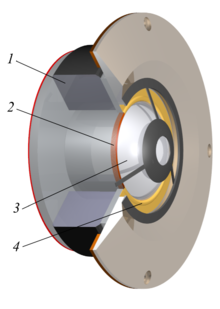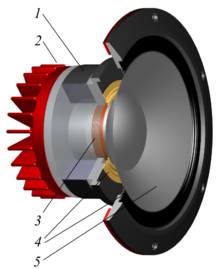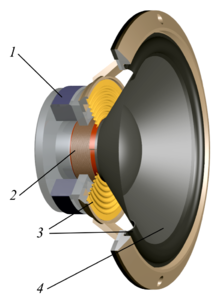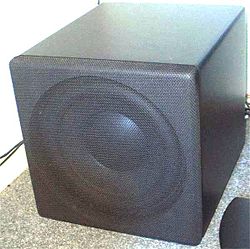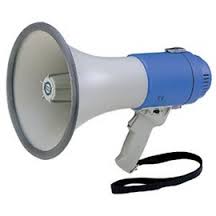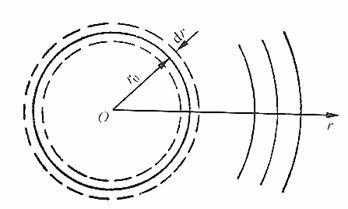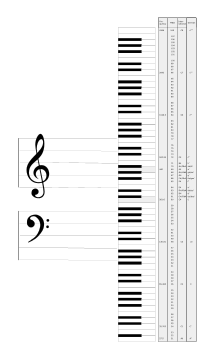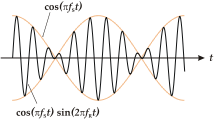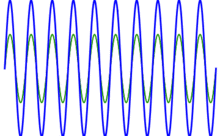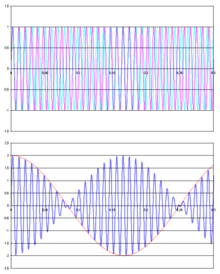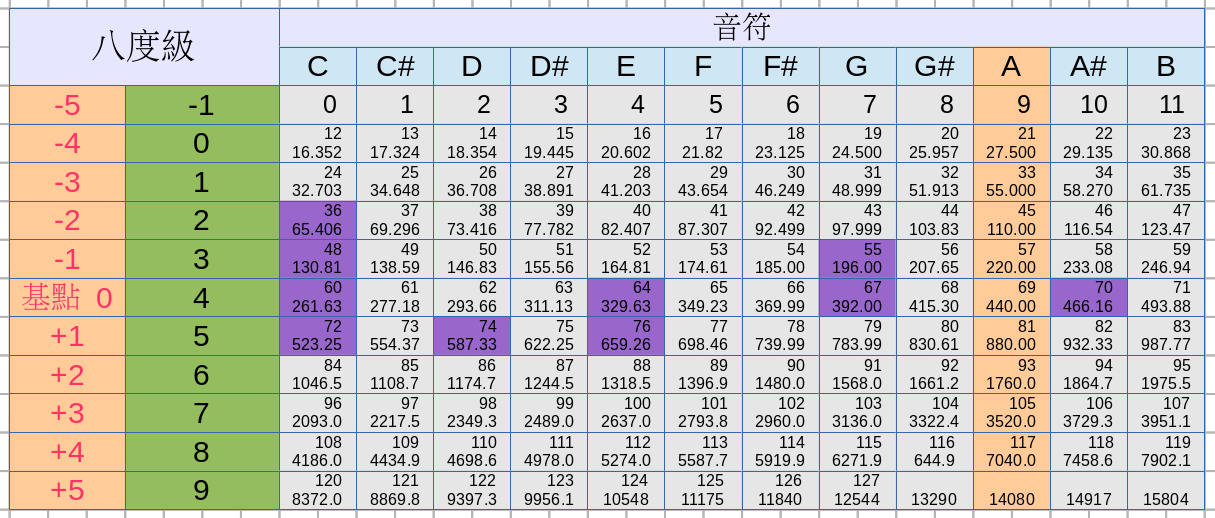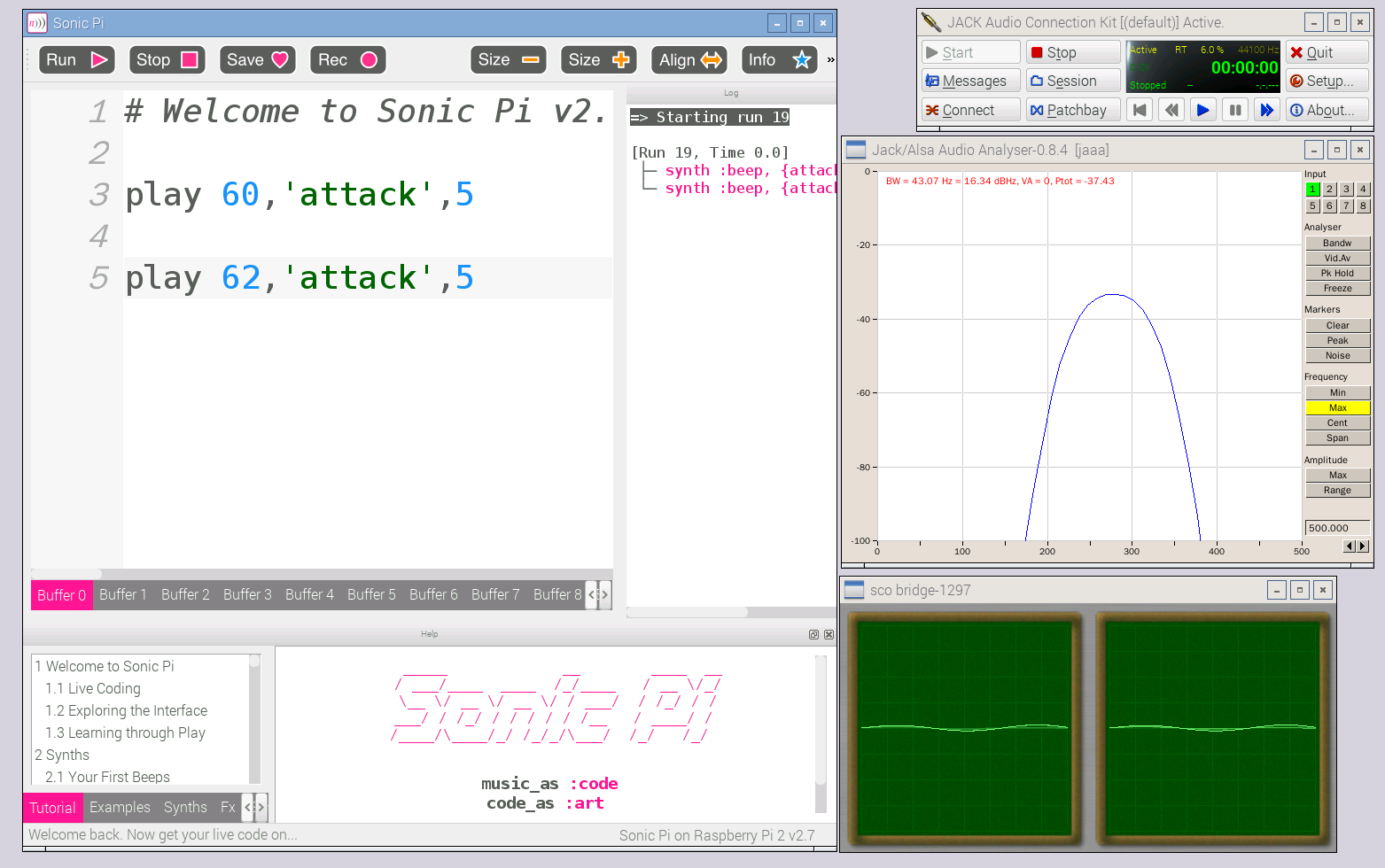在《【Sonic π】聲波之傳播原理︰共振篇《四下》》文本裡,我們談到了一根『半波長』之『估量的尺』,意在表明『欣賞自然』與『理解科學』的『靜觀自得』之境。此境將周遭萬象與人『關聯』起來,於是我們可以更深入的認識『自然』與『人造』物的世界︰
波的傳播除了『頻率』之外,『波長』也是重要的因素,尤其在考慮波的『輻射』與『散射』現象的時候。常溫下聲波速度約為 343.2 米/秒,從一個『邊長』是 ![]() 的共振腔共振時『半波長』的『整數倍』來看,它是否可以用來度量『聲源』的『尺寸』大小的呢?假使以『音律』中『十二平均律』的鋼琴『中央 C』261.6 赫茲來作計算,聲波波長大約是 1.312 米。『紅嘴相思鳥』鳴叫聲,以基本音調為主,頻率範圍大約為 2.50 ~ 3.80 千赫,主峰在 1.82 千赫,波長是 18.86 公分。當一隻鳥在發現略食者在周遭時,會發出警告同伴的鳴叫聲,它的頻率大約是 7000 Hz,波長約為 4.90 公分。『蟋蟀』的蟲鳴聲頻率範圍很廣 3 ~ 50 千赫,通常是相當純的律音,主峰在四、五千赫,次峰在十四千赫。以主峰 4.5 千赫計算大約 7.63 公分。 『人類』的發聲頻率範圍約為 85 ~ 1100 赫茲,假使說以低音 85 赫茲來講,波長為 4.04 米;『狗』的發聲頻率範圍是 452~ 1800 赫茲,波長是 75.93 公分;『貓』的發聲頻率範圍是 760 ~ 1500 赫茲,波長是 45.15 公分。如此看來『半波長』果然可以看成一根『估量的尺』,假使一個物體沒有明顯的『長寬高』,比方說像一個『球』,它的共振波長
的共振腔共振時『半波長』的『整數倍』來看,它是否可以用來度量『聲源』的『尺寸』大小的呢?假使以『音律』中『十二平均律』的鋼琴『中央 C』261.6 赫茲來作計算,聲波波長大約是 1.312 米。『紅嘴相思鳥』鳴叫聲,以基本音調為主,頻率範圍大約為 2.50 ~ 3.80 千赫,主峰在 1.82 千赫,波長是 18.86 公分。當一隻鳥在發現略食者在周遭時,會發出警告同伴的鳴叫聲,它的頻率大約是 7000 Hz,波長約為 4.90 公分。『蟋蟀』的蟲鳴聲頻率範圍很廣 3 ~ 50 千赫,通常是相當純的律音,主峰在四、五千赫,次峰在十四千赫。以主峰 4.5 千赫計算大約 7.63 公分。 『人類』的發聲頻率範圍約為 85 ~ 1100 赫茲,假使說以低音 85 赫茲來講,波長為 4.04 米;『狗』的發聲頻率範圍是 452~ 1800 赫茲,波長是 75.93 公分;『貓』的發聲頻率範圍是 760 ~ 1500 赫茲,波長是 45.15 公分。如此看來『半波長』果然可以看成一根『估量的尺』,假使一個物體沒有明顯的『長寬高』,比方說像一個『球』,它的共振波長 ![]() 正比於『體積立方根』也就是『想當然耳』的了!!
正比於『體積立方根』也就是『想當然耳』的了!!
然而人的『聽覺範圍』是從 20 到 20k Hz,一個二十赫茲的聲音波長有 十七點一六米那麼長,這樣一個『音響喇叭』又要多大才能夠『共振』的呢?因為即使對『中央 C』來講,半波長也有 65.6 公分那麼長。所以一般動力『揚聲器』Loudspeaker 是用『聲波輻射』原理來設計的。
聲學裡一個『脈動球』 Pulsataing Sphere 『聲源』
是一個『半徑』在 ![]() 附近
附近 ![]() 以『頻率』
以『頻率』![]() 作『簡諧振動』的球,假使球的半徑遠小於聲波『波長』
作『簡諧振動』的球,假使球的半徑遠小於聲波『波長』![]() ,多個波長距離之外的遠處『聲場強度』
,多個波長距離之外的遠處『聲場強度』![]() ,此處
,此處 ![]() 是聲源振幅。其實假使
是聲源振幅。其實假使 ![]() 它可以看成『點聲源』,比方講這就可以計算典型『揚聲器』的圓形『振動膜』所產生的『聲場』。因此也就可以了解為了追求『高傳真』 HiFi 的『聲音品質』,揚聲器分開了『高音』、『中音』以及『低音』喇叭設計的原故。以及現今為了加強『影音』的『震撼力』與『臨場感』採用杜比 AC3 5.1 規格,它有五個『喇叭』加上一個『超重低音』音箱的因由。
它可以看成『點聲源』,比方講這就可以計算典型『揚聲器』的圓形『振動膜』所產生的『聲場』。因此也就可以了解為了追求『高傳真』 HiFi 的『聲音品質』,揚聲器分開了『高音』、『中音』以及『低音』喇叭設計的原故。以及現今為了加強『影音』的『震撼力』與『臨場感』採用杜比 AC3 5.1 規格,它有五個『喇叭』加上一個『超重低音』音箱的因由。
當人們在戶外,有時『拗著手』作『大聲公』狀來『叫人』,它是可以用『共振』和『輻射』來作解釋的嗎?每當夜深人靜時,『蟲鳴鳥叫』聲又為什麼會『擾人清夢』的呢??
也許越『理解』大自然,人們就越可能『欣賞』大自然的『美』吧!又或許果真是『處處靜觀皆自得』的啊!!
───
若是人們知道『十二平均律』發現的歷史︰
十二平均律
十二平均律,又稱十二等程律,是一種音樂的定律方法,將一個八度平均分成十二等份,每等分稱為半音,是最主要的調音法。
歷史
公元 400 年左右,中國南朝數學家何承天提出世界歷史上最早有記載的十二平均律數列 900 849 802 758 715 677 638 601 570 536 509.5 479 450(原文:……黃鐘長九寸,太簇長八寸二厘,林鐘長六寸一厘,應鐘長四寸七分九厘強)[1] .
義大利的物理學家伽利略·伽利萊的父親伽利略·文森佐曾試圖解決十二平均率問題,但他用的倍率是 18:17 而不是![\sqrt [12] {2}](https://upload.wikimedia.org/math/7/0/b/70b8b8fc763c20423a65bd934e378085.png) ,因此自乘12次後只得 1.98556,不是2,八度走了音,他的系統只可算近似十二音階平均律[2]
,因此自乘12次後只得 1.98556,不是2,八度走了音,他的系統只可算近似十二音階平均律[2]
1605年荷蘭數學家西蒙·斯特芬在一篇未完成的手稿「Van de Spiegheling der singconst」[3]提出用![\sqrt [12] {1/2}](https://upload.wikimedia.org/math/e/7/a/e7a14fb08396757b493af39425a5917d.png) 計算十二平均律,但因計算精度不夠,他算出的弦長數字,有些偏離正確數字一至二單位之多[4]
計算十二平均律,但因計算精度不夠,他算出的弦長數字,有些偏離正確數字一至二單位之多[4]
西蒙·斯特芬的弦長表[5]
| 音 | 弦 10000 | 比率 | 正確的弦長 |
|---|---|---|---|
| 半音 | 9438 | 1.0595465 | 9438.7 |
| 全音 | 8909 | 1.0593781 | |
| 1.5 音 | 8404 | 1.0600904 | 8409 |
| 2 倍全音 | 7936 | 1.0594758 | 7937 |
| 2.5 音 | 7491 | 1.0594046 | 7491.5 |
| 3 音 | 7071 | 1.0593975 | 7071.1 |
| 3.5 音 | 6674 | 1.0594845 | 6674.2 |
| 4 音 | 6298 | 1.0597014 | 6299 |
| 4.5 音 | 5944 | 1.0595558 | 5946 |
| 5 音 | 5611 | 1.0593477 | 5612.3 |
| 5.5 音 | 5296 | 1.0594788 | 5297.2 |
| 八度 | 1.0592000 |
西蒙·斯特芬的頻率比,每音一率,且各不相同,這是不正確的[6]
朱載堉發明十二平均律
中國明代音樂家朱載堉於萬曆十二年(1584年)首次提出「新法密率」(見《律呂精義》、《樂律全書》),推算出以比率 ![\sqrt [12] {2}](https://upload.wikimedia.org/math/7/0/b/70b8b8fc763c20423a65bd934e378085.png) 將八度音等分為十二等分的算法,並製造出十二平均律律管及律準,是世界上最早的十二平均律樂器。他用九九八十一位算盤計算出來準確到25位數字新法密率為:
將八度音等分為十二等分的算法,並製造出十二平均律律管及律準,是世界上最早的十二平均律樂器。他用九九八十一位算盤計算出來準確到25位數字新法密率為:
| 律名 | 比率 |
|---|---|
| 正黃鐘 | 1.000000000000000000000000 |
| 倍應鍾 | 1.059463094359295264561825 |
| 倍無射 | 1.122462048309372981433533 |
| 倍南呂 | 1.189207115002721066717500 |
| 倍夷則 | 1.259921049894873164767211 |
| 倍林鍾 | 1.334839854170034364830832 |
| 倍蕤賓 | 1.414213562373095048801689 |
| 倍仲呂 | 1.498307076876681498799281 |
| 倍姑洗 | 1.587401051968199474751706 |
| 倍夾鍾 | 1.681792830507429086062251 |
| 倍太蔟 | 1.781797436280678609480452 |
| 倍大呂 | 1.887748625363386993283826 |
| 倍黃鐘 | 2.000000000000000000000000 |
───
自將更能了解『 MIDI 碼』之制定與『十二平均律』的關係︰
MIDI 碼 = ![]()
進而明白『鋼琴』琴鍵安排的規律。這一切的種種都離不開人類的『聽覺』,自然也沒有古今東西之人性差異。憑藉『感官知覺』之天賦,人們區分了『聲』與『樂』,『光』和『色』,居處於聲光樂色如斯美好的宇宙。這也許也說明了『感覺』終究是『物理』以及『心理 』之『統覺』的吧!那根『豆芽』之理竟如是難啃的耶?所以我們需要『聽得見』又『看得到』的『學習環境』來『體驗』那既『具體』又『抽象』之『感覺』實在的乎!?
也許一個『拍頻』 beat note 『現象』之問題,足以表達那難言之隱的吧!!假使回答以
差頻(英文:beat note)一詞來源於聲學上兩個頻率相近但不同的聲波的干涉,所得到的干涉信號的頻率是原先兩個聲波的頻率之差 ,因此叫做差頻。
───
,怕是難明究理。即使再補之以
Beat (acoustics)
In acoustics, a beat is an interference between two sounds of slightly different frequencies, perceived as periodic variations in volume whose rate is the difference between the two frequencies.
With tuning instruments that can produce sustained tones, beats can readily be recognized. Tuning two tones to a unison will present a peculiar effect: when the two tones are close in pitch but not identical, the difference in frequency generates the beating. The volume varies like in a tremolo as the sounds alternately interfere constructively and destructively. As the two tones gradually approach unison, the beating slows down and may become so slow as to be imperceptible.
Mathematics and physics of beat tones
This phenomenon manifests acoustically. If a graph is drawn to show the function corresponding to the total sound of two strings, it can be seen that maxima and minima are no longer constant as when a pure note is played, but change over time: when the two waves are nearly 180 degrees out of phase the maxima of each cancel the minima of the other, whereas when they are nearly in phase their maxima sum up, raising the perceived volume.
It can be proven (see List of trigonometric identities) that the successive values of maxima and minima form a wave whose frequency equals the difference between the frequencies of the two starting waves. Let’s demonstrate the simplest case, between two sine waves of unit amplitude:
If the two starting frequencies are quite close (for example, a difference of approximately twelve hertz[2]), the frequency of the cosine of the right side of the expression above, that is (f1−f2)/2, is often too slow(low) to be perceived as a pitch. Instead, it is perceived as a periodic variation of the first in the expression above (it can be said that the lower frequency cosine term, i.e. the second one, is an envelope for the faster wave, i.e. the first cosine term), whose frequency is (f1 + f2)/2, that is, the average of the two frequencies. However, because the human ear is not sensitive to the phase, only the amplitude or intensity of the sound, only the absolute value of the envelope is heard. Therefore, subjectively, the frequency of the envelope seems to have twice the frequency of the cosine, which means the audible beat frequency is:
This can be seen on the diagram on the right.
The sum (blue) of two sine waves (red, green) is shown as one of the waves increases in frequency. The two waves are initially identical, then the frequency of the green wave is gradually increased by 25%. Constructive and destructive interference can be seen.
A physical interpretation is that when  equals one, the two waves are in phase and they interfere constructively. When it is zero, they are out of phase and interfere destructively. Beats occur also in more complex sounds, or in sounds of different volumes, though calculating them mathematically is not so easy.
equals one, the two waves are in phase and they interfere constructively. When it is zero, they are out of phase and interfere destructively. Beats occur also in more complex sounds, or in sounds of different volumes, though calculating them mathematically is not so easy.
Beating can also be heard between notes that are near to, but not exactly, a harmonic interval, due to some harmonic of the first note beating with a harmonic of the second note. For example, in the case of perfect fifth, the third harmonic (i.e. second overtone) of the bass note beats with the second harmonic (first overtone) of the other note. As well as with out-of tune notes, this can also happen with some correctly tuned equal temperament intervals, because of the differences between them and the corresponding just intonation intervals: see Harmonic series (music)#Harmonics and tuning.
A 110 Hz A sine wave (magenta; first 2 seconds), a 104 Hz G# sine wave (cyan; following 2 seconds), their sum (blue; final 2 seconds) and the corresponding envelope (red)
───
恐仍莫名其妙,或將知『學習環境』之重要的耶??
就讓我們試著用 Sonic π 建造一個『節拍體驗』情境,看看能否自學『樂理』的哩?!
現代『聽覺』的研究表明,雖然不同的人『音感』不同,然而卻都有下圖的聽覺『共性現象』:用一參考音高 F1 、另一變化音高 F2 ,讓 F2 遠比 F1 小而漸增加,聽覺逐漸從『平穩』變成『不平穩』── 『臨界頻帶』,在頻率差小於 15 Hz 時轉成了『拍音區域』、一般人當頻率差小於 12.5 Hz 時會產生『拍音』之感覺,最後 F2 = F1 時感覺是同音高;同樣的如果 F2 由比 F1 大而減小,情況相同。
所以我們可以借
【 MIDI 碼‧音高頻率表】
及一點點『 Sonic π 』之編程,在 JACK 的環境中,
探究、體驗、玩索『節拍』現象的真實矣!!
